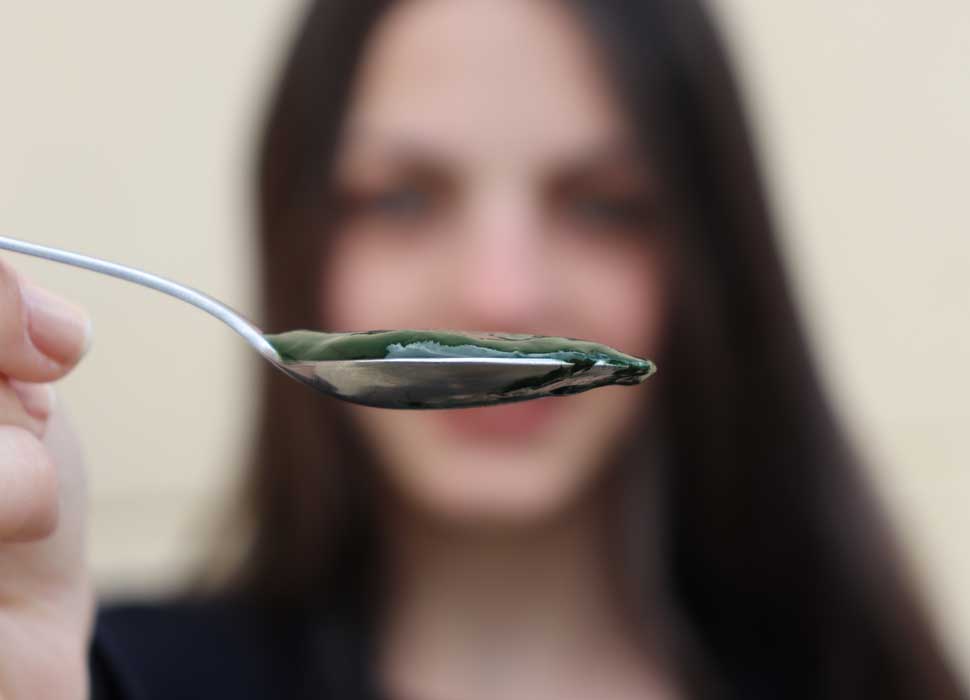When it comes to juice, what do you choose? Freshly squized orange juice, or powder? This is what we thought when we decided to go for fresh spirulina.
Dry spirulina has magnificent properties. In a clinical study [1] on nine moderately trained males in Greece, the ones consuming spirulina for a month had their stamina increased by 30% at full speed on a treadmill, after jogging for 2h.
Given that dry spirulina gives such good results, just imagine what could be achieved by consuming all fresh spirulina! Fresh spirulina has much higher concentration in beneficial compounds, as no drying takes place. Furthermore, fresh spirulina has much higher bioavailability, meaning a bigger part is absorbed by our bodies. Overall, fresh spirulina has much higher antioxidant and anti-inflammatory potency, compared to the dry one [2].
So, why do producers dry spirulina? They do this to increase the shelf life of the product. However, this is not the best practice, once you come to understand that half of the antioxidant potency of dry spirulina is destroyed within a month, even at mild Temperatures 25°C [3].
This is true as antioxidant compounds are heat-sensitive.
Nowadays, spirulina is produced far from big urban centers. This mandates its drying. This is where IT'S ALIVE comes to fill the gap. We developed a technology through a long experimentation time, to offer fresh spirulina at the price of the dry one. No excuses to consume dry spirulina anymore.
REFERENCES:
1) https://journals.lww.com/acsm-msse/Fulltext/2010/01000/Ergogenic_and_Antioxidant_Effects_of_Spirulina.19.aspx
2) https://www.sciencedirect.com/science/article/pii/S1878029615000432
3) https://www.researchgate.net/publication/308607151_Thermal_and_photo-stability_of_the_antioxidant_potential_of_Spirulina_platensis_powder


